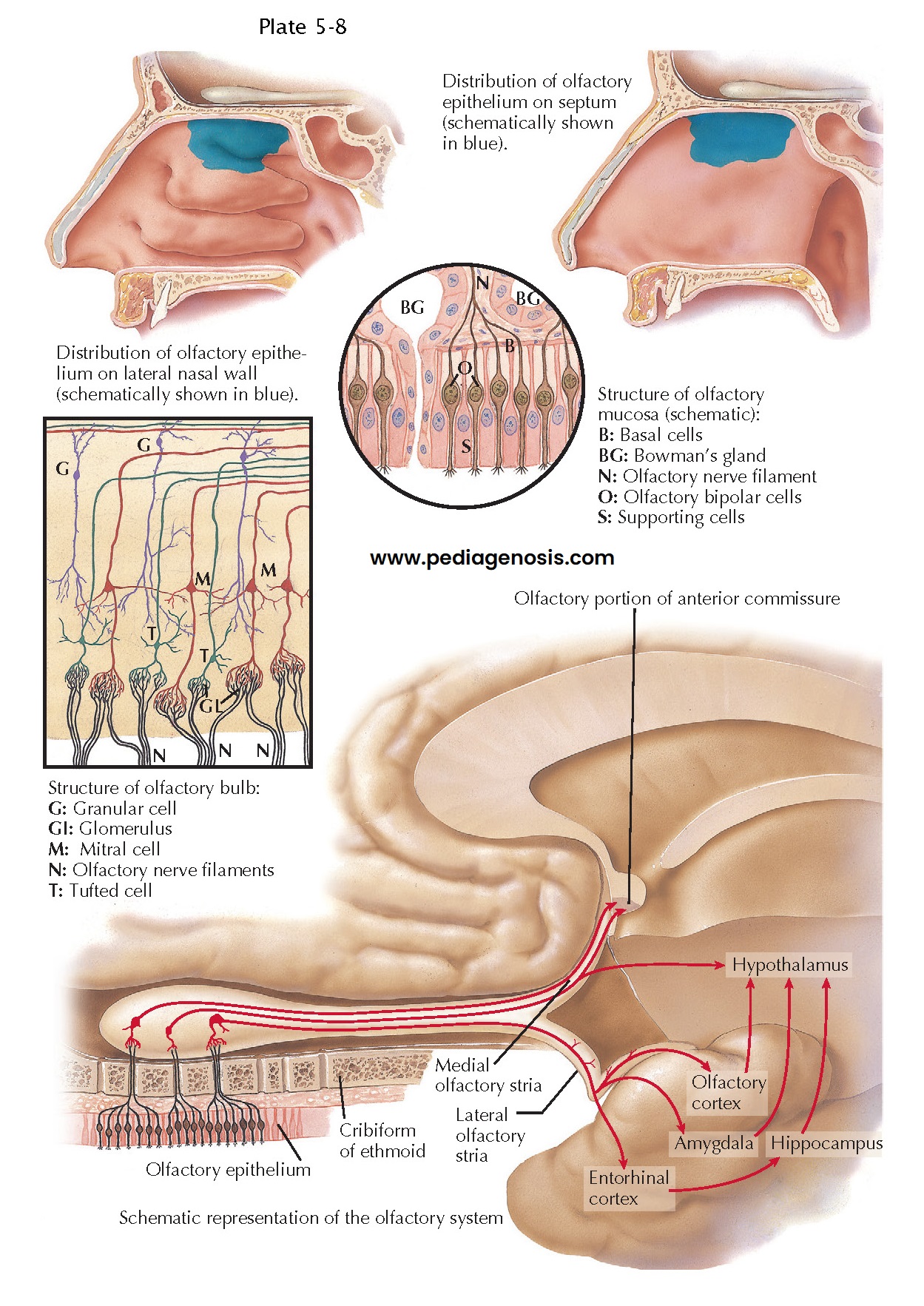Olfactory Inputs to the Hypothalamus
There are about 1,000 olfactory receptor genes, each of which recognizes a different class of chemical olfactory stimulus. Each olfactory receptor cell expresses a single olfactory receptor type, and each gene is expressed in several hundred cells, spread across the olfactory mucosa. The axons from olfactory receptor cells then run through openings in the cribriform plate, which forms the base of the skull over the olfactory mucosa, and axons from individual cells, which express a single receptor gene, then converge in the olfactory bulb on one or a few individual olfactory glomeruli.
The glomeruli
are on the surface of the olfactory bulb and are spherical areas, each about
one third millimeter across. The outside of the glomerulus is lined with tiny
periglomerular cells, which are interneurons. Just deep to the glomerular layer
are mitral and tufted cells, which send their apical dendrites up into the
glomeruli, where they receive olfactory sensory information. These excite
granule cells, which, in turn, inhibit the other mitral and tufted cells, as
well as receiving centrifugal axons, which allow them to modulate the
perception of the sensory stimulus. Only the mitral and tufted cells send their
axons into the brain via the olfactory tract. In humans, this is a long white
matter bundle that runs the length of the frontal lobe and is sometimes
erroneously called the “olfactory nerve.”
The olfactory
tract supplies information about smell to a variety of targets in the brain. It
bifurcates as it approaches the temporal lobe into one branch that runs
medially into the basal forebrain and another that runs laterally to supply
olfactory inputs to cortical structures. The basal forebrain branch provides
inputs to the anterior olfactory nucleus, which sends axons through the
anterior commissure to the opposite hemisphere, and the olfactory tubercle,
which is the part of the striatum that receives olfactory inputs. The lateral
olfactory branch provides inputs to the primary olfactory cortex, which appears
to be necessary for processing the conscious appreciation of odors, as well as
the entorhinal cortex, which is a point of convergence of information from
multiple sensory systems and a major relay into the hippocampal formation.
There is also input to the amygdala, which may be important for relaying
olfactory signals related to food acquisition and sexual behavior to the
hypothalamus.
In many mammals, there is an accessory olfactory system. A small pit in the nasal mucosa, called the vomeronasal organ, contains olfactory sensory neurons that are important for sensing pheromones. These olfactory neurons synapse in a specialized region called the accessory olfactory bulb and relay information concerned with social behaviors into the amygdala and hypothala- mus. Such a system has never been clearly identified in humans, and its very existence remains controversial.





